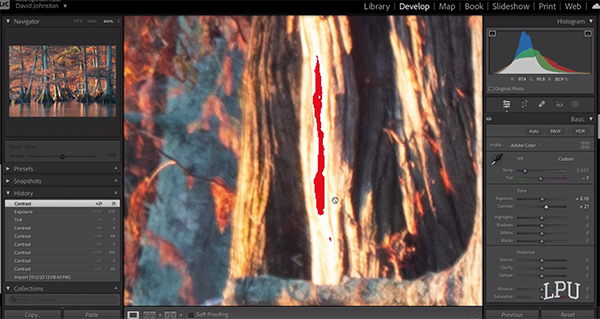Kevin McCloud reveals the one thing that all the best-looking homes he’s seen have in common
All you need is something ‘old, new, borrowed, and blue’
If you’re new to processing images in Lightroom there’s a whole lot to learn, both for doing things right and avoiding common image-killing errors. In this quick tutorial from Landscape Photography University you’ll learn how to avoid what one pro calls, “the biggest beginner photography mistake in Lightroom.”
Instructor David Johnston is a landscape photography pro who regularly post posts basic lessons intend to help others “level up the success of their photography.” The topic of this episode is the simple task of adjusting contrast in a way that doesn’t spoil photos by imparting an ugly or unrealistic effect.
Johnston begins with a helpful discussion of how Contrast adjustments work, and what happens when you take a heavy-handed approach. As you’ll see, doing things wrong is often worse than doing nothing at all. Bottom line, when you blast Lightroom’s Contrast slider too far to the right, really bad things happen to an image.

What you really want to know is the correct way to modify Contrast, and Johnston offers three simple solutions; one that he calls a “beginner” fix that works quite well, another that’s a bit more advanced, and the third is what he refers to as a “pro fix.” His demonstration image is of a beautiful morning landscape scene of cypress trees in a swamp.
There’s really nice side light, and beautiful colors, and his composition is great. So what’s the problem? He explains it like this: “There’s a lot of light going on, with shadows, highlights, and tones ranging from whites to blacks. So how do you know how to mix all these up?”
Johnston’s approach for enhancing the shot involves judicious modifications to Contrast for a natural looking image. And he does this without any ugly artifacts that will spoil the photo by taking things too far. In other words, it’s another example of when less can be more.

According to Johnston, ugly results occur “when adjacent highlights and shadows are too far apart.” Put another way, this mistake creates unrealistic images that you’d never see in real life. So follow along as he demonstrates three techniques for getting things right. Then decide whether the beginner, advanced, or pro fix works best for you.
Be sure to check Johnston’s instructional YouTube channel after watching the video. You’re sure to find more tips and techniques for improving your shooting and post-capture skills.
We also suggest watching the earlier tutorial we posted, with an easy and very effective method for shooting and editing eye-popping panorama photographs.
Unless you’re shooting with a full-frame camera, crop factor is an important issue in a variety of ways. And to complicate matters, there are a variety of crop factors to consider, whether you’re using an APS-C model, a high-end compact, a superzoom camera, or a pocket camera of various types.
Some photographers understand the implications of crop factor in terms of focal length, but this tutorial kicks off with a less familiar question; namely, should you apply the crop factor to aperture? There are several misunderstandings out there on this topic, and photographer Simon d’Entremont says one critical concept that’s often ignored is known “equivalency.”
In this episode Simon explores how crop factors and sensor sizes affect your camera settings and how a resulting photo appears. He prefaces his explanation by noting that “not everyone agrees with this.” But Simon is a superb professional nature and wildlife photographer, so we always listen when he takes a controversial view.

Simon begins with illustrations that compare physical dimensions of the most common most common sensor sizes, including full-frame, APS-C, micro-four thirds, and those even smaller. He then discusses how these different types of sensor affect the images you capture in different ways.
It’s important to remember that your lens doesn’t project a rectangular image into your camera. Rather, as Simon says, “it projects an image circle into the camera from which the sensor records a rectangular section to capture the photo.” Some shooters mistakenly believe that crop sensor lenses shrink the image to fit a smaller sensor, or full-frame lenses stretch images to fit these larger sensors. False!
Simon also explains that while a crop sensor captures the same light intensity (i.e. light per square centimeter)as larger sensors, a full frame sensor captures more total light—providing image-quality advantages for low-light photography.

Simon describes how all this theory impacts imaging characteristics like background blur, depth of field, and other key concerns. In practical terms, the crop factor can be applied to easily calculate the equivalent field of view that smaller sensors provide as compared to full frame. In other words, a 32mm lens on a full-frame camera is equivalent to a 20mm ultra-wide lens on an APS-C camera.
At this point you’re probably wondering how all this affects aperture, right? Well, an understanding of the foregoing was necessary to make it easy to evaluate Simon’s view on this subject and determine if it works for you. After hearing him out, head over to his informative YouTube channel for more great tips on techniques and gear.
We also suggest watching the tutorial we posted recently from another accomplished pro, so you can determine if your unsharp photographs are due to a faulty lens or a bad filter.
